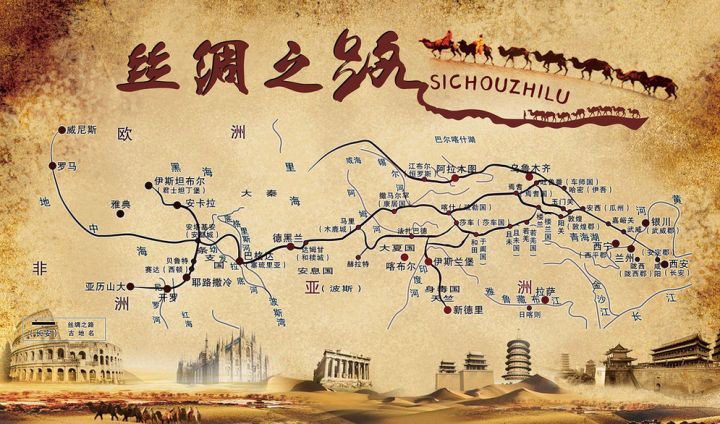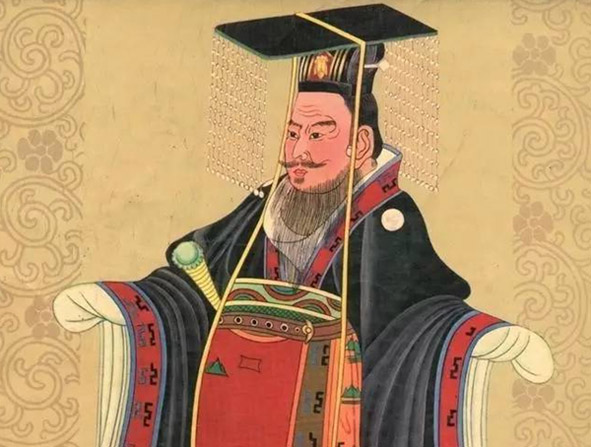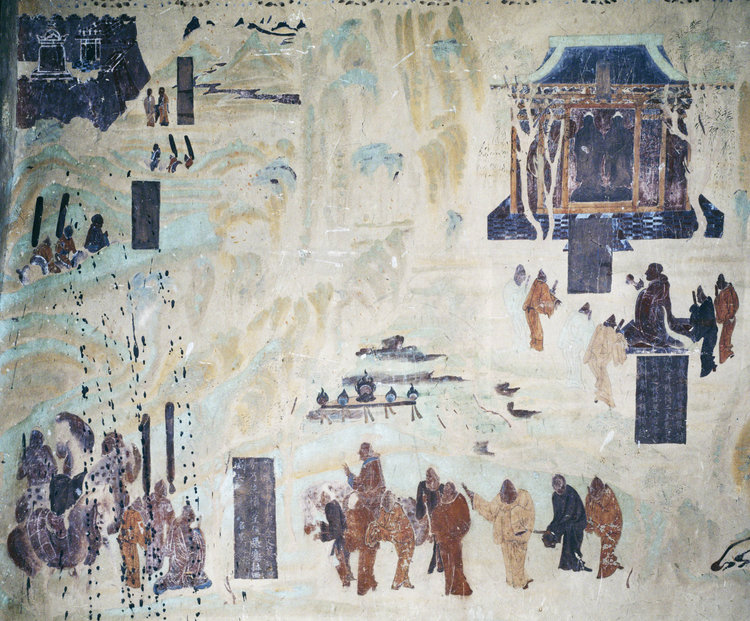The Silk Road (丝绸之路 Sīchóu Zhīlù) was a network of land roads that made up one of the most important trade routes in history. The main one departed from Cháng'ān 長安 (present-day Xī'ān 西安) and reached the Roman Empire, known in China as Dà Qín 大秦. Zhāng Qiān 張騫 was an important figure in the opening of this trade route and the cultural exchange between East and West.

In the 2nd century B.C., the Xiōngnú 匈奴, a nomadic Central Asian tribe, controlled an empire that stretched from Siberia and Mongolia to what is now the Chinese province of Xīnjiāng 新疆. Back then, the lands under the rule of the Hàn 漢 dynasty were just a small portion of what we now know as China. Outside of these were the Tibetan plateau (including much of the provinces of Yúnnán 雲南, Sìchuān 四川, Qīnghǎi 青海 and Gānsù 甘肅), the provinces of Jílín 吉林 and Hēilóngjiāng 黑龍江 north of Korea, and Inner Mongolia (内蒙古 Nèi Měnggǔ), which belonged to the Xiōngnú empire.
As the Xiōngnú frequently raided Chinese lands and blocked trade between China and the west, emperor Wǔ Dì 武帝 of Hàn sent Zhāng Qiān, one of his officials, with the task of securing an alliance with the Western Regions (西域 Xīyù, the Chinese name given to the lands of Central Asia, including present-day Xīnjiāng) to expel the nomads.

Emperor Wǔ Dì 武帝
In 139 B.C., Zhāng Qiān departed for the lands of the Yuèzhī 月氏 in the Fergana Valley (费尔干纳盆地 Fèi’ěrgānnà Péndì) with a contingent of one hundred men; however, when they crossed the Héxī Corridor (河西走廊 Héxī Zǒuláng), the Xiōngnú attacked them and Zhāng Qiān was taken prisoner.
After more than ten years in captivity, during which he married a Xiōngnú woman and had a child, Zhāng Qiān managed to escape and reached Dàyuān 大宛 in the Fergana Valley, but the king of the Yuèzhī rejected his proposal for an alliance. However, he spent a year in the territory of the Yuèzhī and other Central Asian peoples, learning about their culture and lifestyle. On his way back to China, he was again captured by the Xiōngnú, who kept him alive, until he was again able to escape, taking advantage of the confusion reigning after the death of their leader.
He eventually returned to Cháng'ān in 126 B.C. and, although he was unable to fulfill his mission, brought with him valuable information on the cultures and peoples of the west, which convinced the emperor of the possibilities of trade and the benefits of controlling the region.
Thus, the armies of the Hàn dynasty, who during Zhāng Qiān's long absence had already been fighting the Xiōngnú, managed to inflict some defeats on them until in 119 B.C. they took control of the region. Then Zhāng Qiān was sent back as ambassador of the Chinese court, with a contingent of about 300 men carrying gifts for some of the western states, in order to establish friendship and trade relations with the peoples of Fergana and Bactria, beyond the Pamir Mountains.

Mural painting depicting the departure of Zhāng Qiān 張騫 to the Western Regions,
Mògāo Caves 莫高窟, Dūnhuáng 敦煌.
It is difficult to clarify the origin of the Silk Road, since it is a complex network of roads already existing before trade between the China and the Western Regions, a trade that could only be established as long as there were stable regimes along these paths. This stability, ensured by the control of the roads, and which would give security to traders, was only possible when the Hàn dynasty took control of these routes. In China, Zhāng Qiān is held as the pioneer who opened the Silk Road by transporting all those gifts, which included horses, cattle, gold and, of course, silk, and which were matched to others that the leaders of those states sent to the Hàn court. However, the discovery of Chinese silk in Bactria, which dates back to about 1500 B.C., shows that previous trade ties already existed.
Following the beginning of friendly relations with the west, the Xiōngnú attacked the state of Wūsūn 烏孫, in the north of the Tiān Shān Mountains 天山, but they were defeated again by the Chinese army. Following the surrender of one of the Xiōngnú Princes, China established the Protectorate of the Western Regions, under the supervision of Zhèng Jí 郑吉 as a military viceroy, in 60 B.C.
Between the end of the Western Hàn dynasty and the establishment of the Eastern Hàn, the Xiōngnú took Xīnjiāng back. For nearly a century the Chinese tried to restore the Protectorate, achieving it for some periods; being expelled in others, until they definitively imposed in 123 A.D. Trade routes were again open and the Hàn government established posts to protect the roads, and so the flow of caravans along the Silk Road started to increase.
After Zhāng Qiān's mission, many other trade missions were sent, gradually establishing ties between the Chinese empire and the Western Regions. Through these routes not only products were exchanged: also news, ideas, knowledge and religions, opening the way to cultural exchange between East and West. A short time later, Buddhism would penetrate China on this same route and flourish remarkably, leading to the establishment of important enclaves and great centers of knowledge and culture, such as Dūnhuáng 敦煌 or the legendary kingdom of Lóulán 樓蘭.
Note:
Some scholars have identified the Xiōngnú 匈奴 with the Huns. The so-called Yuèzhī 月氏 in ancient China are the same peoples known in the West as Scythians.
